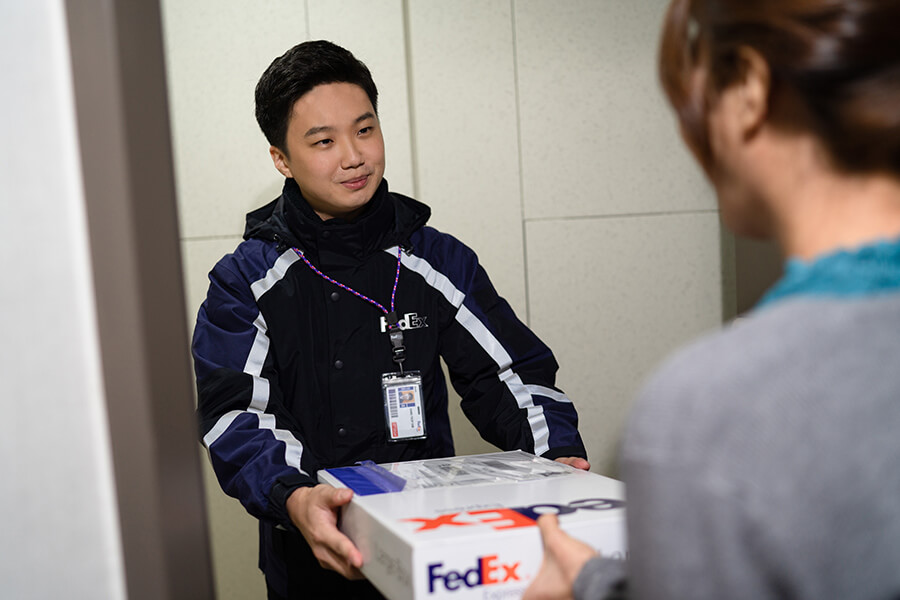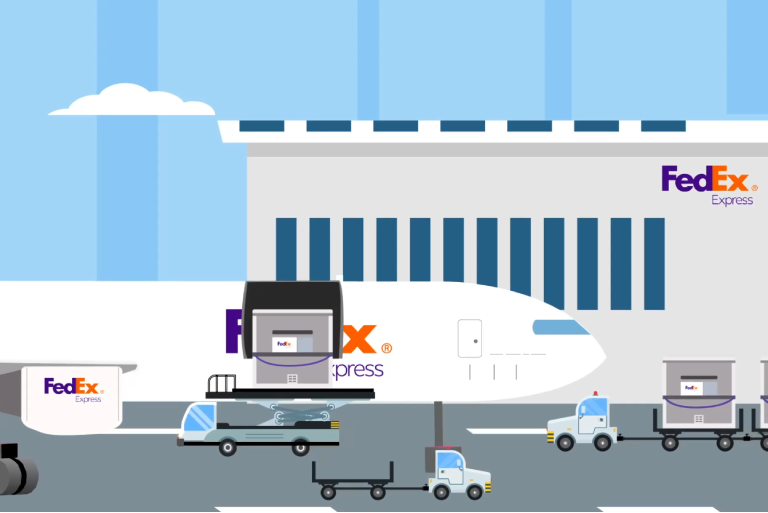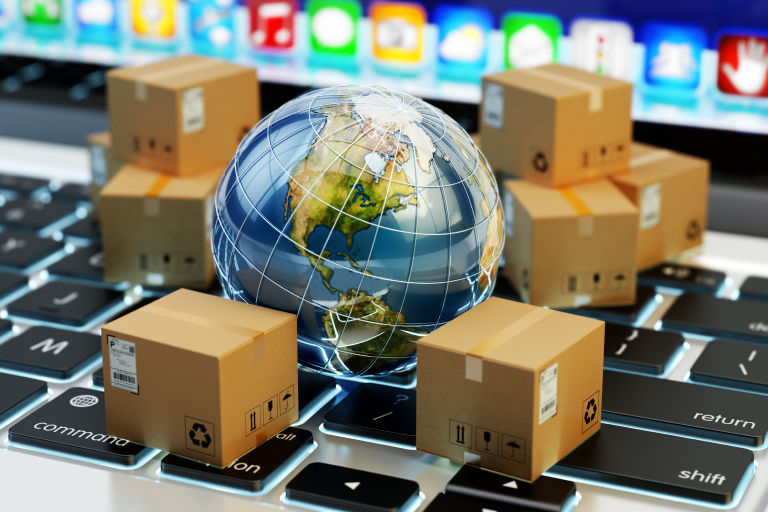More Cross-Border E-Commerce Opportunities With Asia–Europe Trade
Multiple trade lanes between Asia and Europe are creating opportunities for businesses in both geographies. Powered by e-commerce, SMEs can expand into new markets and customers.
5 expert tips for Asia-Europe trade
1. Take advantage of trade deals
2. Peak season is where the opportunities lie
3. Leverage the expertise of a logistics partner
4. Understand the barriers so you can overcome them
5. Above all, stay flexible
1. Take advantage of trade deals
2. Peak season is where the opportunities lie
3. Leverage the expertise of a logistics partner
4. Understand the barriers so you can overcome them
5. Above all, stay flexible
Asia and Europe have been trading for centuries – with huge benefits for how global traditions and shared cultures have evolved. But with the Silk Road and Spice Routes a thing of the past, what opportunities does Asia-Europe trade offer for today’s SMEs?
Asia’s trade with Europe has continued to grow in recent decades. The growth of e-commerce means SMEs in both geographies have greater access to global markets.
Despite macroeconomic and financial challenges across, Europe, opportunities are out there. Europe’s major economies represent $660 billion potential revenue for Asian exporters, while China, India and ASEAN offer $482 billion in potential trade for European exporters in Asian markets.
The bottom line? Asia-Europe trade has the potential to position Asia’s businesses in a central role for economic growth and resilience.
So, when considering the possibilities of Asia-Europe commerce, what are the most important considerations for business owners? Here's a breakdown of the top five.
Historically, the EU has focused on securing strategic trade partnerships with APAC countries like China, India, Japan and South Korea. China has long been one of the biggest EU trade partners, supplying European small businesses with the products and materials they need to operate. The EU signed an FTA with South Korea back in 2015.
Both China and South Korea are in the top 10 EU trading partners globally, along with Japan.
Asia’s trade with Europe has continued to grow in recent decades. The growth of e-commerce means SMEs in both geographies have greater access to global markets.
Despite macroeconomic and financial challenges across, Europe, opportunities are out there. Europe’s major economies represent $660 billion potential revenue for Asian exporters, while China, India and ASEAN offer $482 billion in potential trade for European exporters in Asian markets.
The bottom line? Asia-Europe trade has the potential to position Asia’s businesses in a central role for economic growth and resilience.
Top 5 business tips for Asia-Europe trade
So, when considering the possibilities of Asia-Europe commerce, what are the most important considerations for business owners? Here's a breakdown of the top five.
1. Take advantage of trade deals
Historically, the EU has focused on securing strategic trade partnerships with APAC countries like China, India, Japan and South Korea. China has long been one of the biggest EU trade partners, supplying European small businesses with the products and materials they need to operate. The EU signed an FTA with South Korea back in 2015.
Both China and South Korea are in the top 10 EU trading partners globally, along with Japan.

But all Asia Pacific countries can use e-commerce as a conduit for trade success and growth with Europe. Recently, Asia Pacific’s big players have teamed up to sign arguably the world’s biggest trade deal, the Regional Comprehensive Economic Partnership (RCEP). The largest global trading block, it accounts for 30% of the world's total GDP and 28% of global trade.
But how, you may ask, does that affect Asia-Europe? There are a few key fringe benefits:
Peak season is an opportunity in both directions: east and westbound, with consumers in both geographies looking to cross-border e-commerce for purchases of overseas goods.
While Chinese and Asian consumers are seeking premium quality goods from Europe, the low pricing of Chinese products is driving purchasing from the EU – particularly for European SMEs who own retail platforms.
The number of both international and Asia-specific shopping holidays in succession – from Black Friday to Diwali, Christmas and Lunar New Year – keeps commerce flowing in both directions faster than any other time of year. Make sure you get ahead of the peak season rush. You’ll find tips on how to prepare right here.
Post-COVID, cargo capacity is a key consideration for businesses and their ability to operate seamlessly in overseas markets. Connectivity has become crucial. At FedEx, route expansions have strengthened export opportunities for APAC businesses over time.
For exporters shipping to Europe, network expansions enable us to more seamlessly connect Asia’s businesses to 45 European countries and territories. The latest example is the launch of our new flights from Vietnam, which has helped SMEs in Southeast Asia and beyond connect to European markets a day faster.
But how, you may ask, does that affect Asia-Europe? There are a few key fringe benefits:
- European companies with established intra-Asian supply chains or Asian subsidiaries can benefit from a reduction in costs under the harmonized Rule of Origin and reduced tariffs among the RCEP countries.
- Intra-Asia cross-border e-commerce may generate more exports of European consumer goods, such as fashion, gourmet food, and cosmetics.
2. Peak season is where the opportunities lie
Peak season is an opportunity in both directions: east and westbound, with consumers in both geographies looking to cross-border e-commerce for purchases of overseas goods.
While Chinese and Asian consumers are seeking premium quality goods from Europe, the low pricing of Chinese products is driving purchasing from the EU – particularly for European SMEs who own retail platforms.
The number of both international and Asia-specific shopping holidays in succession – from Black Friday to Diwali, Christmas and Lunar New Year – keeps commerce flowing in both directions faster than any other time of year. Make sure you get ahead of the peak season rush. You’ll find tips on how to prepare right here.
3. Leverage the expertise of a logistics partner
Post-COVID, cargo capacity is a key consideration for businesses and their ability to operate seamlessly in overseas markets. Connectivity has become crucial. At FedEx, route expansions have strengthened export opportunities for APAC businesses over time.
For exporters shipping to Europe, network expansions enable us to more seamlessly connect Asia’s businesses to 45 European countries and territories. The latest example is the launch of our new flights from Vietnam, which has helped SMEs in Southeast Asia and beyond connect to European markets a day faster.

4. Understand the barriers so you can overcome them
When the UK exited the European Union, it left behind uncertainty for trading partners, importers and exporters who had to get to grips with new Brexit regulations overnight.
Brexit impacts everything from tariffs to customs clearance – and it’s important to stay clued up on the latest updates. Our Brexit page can help - it includes FAQs and a to-do checklist.
A new set of rules have also come into force for EU VAT (value added tax). All businesses will be affected, including online marketplaces based outside of the EU. These changes could lead to simpler procedures and reduced administration. There could also be broader implications for the way you conduct business into the EU. For a step-by-step guidance on how to address these changes for your business, visit our dedicated page here.
5. Above all, stay flexible
COVID-19 dramatically transformed supply chains and global shipping as well as the business models of enterprises and operations of all sizes across the world. At consumer level, it drastically changed purchase habits and shifted cultural norms.
All businesses, especially SMEs, must be ready to step outside their comfort zone – and not shy away from seeking customers in new geographies. Those that once only traded domestically or intra-regionally may now find themselves – thanks to e-commerce – reaching further afield.

It’s important to stay agile. Expanding your own supply chain will help mitigate future disruption (that could in turn affect your customers overseas). Investing time and effort in de-centralized supply chains will help protect you.
Undoubtedly, events move fast. With COVID-19, Brexit, shifts in EU policy and other macroeconomic and geopolitical challenges in recent years, Asia-Europe trade continues to adapt in the face of disruption. But opportunities abound for businesses, including SMEs, who are tuned in to the tools they need for success.
From leveraging trade deals to tapping e-commerce tools that help cross-border growth, it’s an exciting time for both Asian businesses and those further afield.
For more tips and advice on how to help your cross-border business take off, head here.
Undoubtedly, events move fast. With COVID-19, Brexit, shifts in EU policy and other macroeconomic and geopolitical challenges in recent years, Asia-Europe trade continues to adapt in the face of disruption. But opportunities abound for businesses, including SMEs, who are tuned in to the tools they need for success.
From leveraging trade deals to tapping e-commerce tools that help cross-border growth, it’s an exciting time for both Asian businesses and those further afield.
For more tips and advice on how to help your cross-border business take off, head here.
***




















 The Latest
The Latest